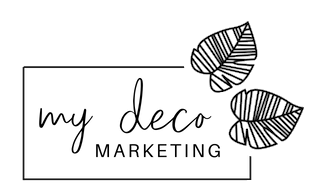3 Quick wins to start marketing your interior design business this January
So here we are at the start of 2024. A New Year is often a time to reassess your marketing strategy taking in to account the successes (and struggles) of the year gone by making time to re-evaluate what will make the best investment in your time, resources and marketing budget in the year ahead. If you’d like to get started on a plan for 2024 just click here to book a quick discovery call.
However aside from making grand plans for the year ahead I’m sure that many of you are keen to hit the ground running this year and make a sure start so here are 3 marketing wins for 2024 that you can start work on right now in January.
1. How would you like to become an award winning designer?
One of the first things you can do this year is enter your projects to be up for a chance of winning an award. The BIID Awards are now open for entries.

You don’t need to be a BIID member to enter the awards and if you enter before 13th March you’ll benefit from an early bird price for the entry fee. There are other awards to look out for throughout the year as well – SBID Awards, Andrew Martin Awards, The Design and Architecture awards etc.
2. Get ready to promote your business with your “Houzz Best Of’ badges
Every year in January Houzz awards it’s Best of Service and Best of Design Badges. If you’ve been collecting Houzz reviews from your happy clients throughout 2023 it’s highly likely you’ll receive a Houzz Best of Service Badge. Display the badge on your website and start crafting those posts for social media as proof of your outstanding service levels and a mark of quality and reassurance to potential new clients.

Reviews and testimonials can be a powerful force to promote your business and the Houzz badge is just one of the ways you can put them to good use. For more ideas take a look at this blog post on how to promote your interior design business with reviews.
If your images are amongst the most saved on the Houzz portal you’ll receive a Houzz Best of Design Badge, a coveted title showing that your design skills are at the cutting edge of the industry and very popular with home renovators.
Views and saves on Houzz are accumulated throughout the year up to this point so the earlier you put your projects on to the portal the more chance you have of gaining views and saves to ideabooks. So pleased to see that one of our clients has this year featured in the Houzz best of Kitchen Design Story featuring the 10 most saved images on Houzz last year, boosting their visibility and website visits.

If you have a stack of portfolio images waiting to appear on Houzz contact us and we’ll get your portfolio projects uploaded with titles and descriptions designed to rank highly in the Houzz algorithm and get found by home renovators across the UK.
3. Write a blog post
As you may already know blog writing is one of the best ways to promote the visibility of your interior design business online without investing in expensive ads. A long term investment in your SEO, creating evergreen content which can help your website get found on Google for many years to come. When people want something in their lives the first thing they do is go to Google. You’ve probably already done this several times yourself today to try and solve a problem. Help potential clients see your value by showcasing how you solve design problems to create beautiful homes.
If you need some help building your blog pages to help your website rank in Google do get in touch.

We’ve got an excellent record of creating Google first page ranking blogs, beautifully written and filled with inspiring images from your own portfolio or our own wide-ranging sources of copyright free images.

If you’d like to write some blog posts yourself but need some inspiration grab a copy of my guide – 365 Blog Posts for Inter
ior Designers. Packed with tips to help you create blogs that not only get found in search engines but help you convert those potential clients in to confirmed project bookings.
I hope these ideas will help you get your marketing of to a positive start for 2024. If you need more help with content marketing through blog posts and social media management get in touch and see how we can help.







